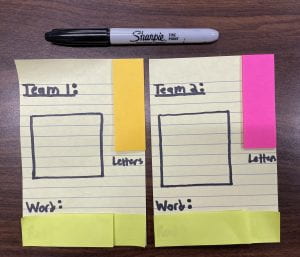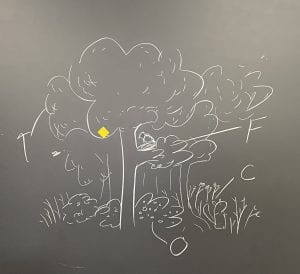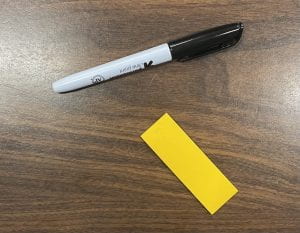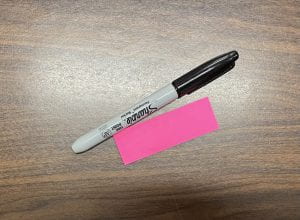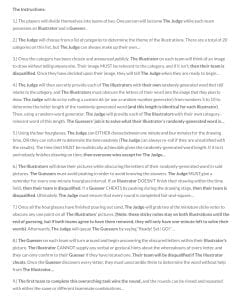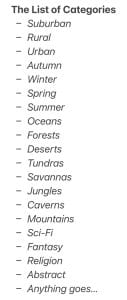The Requirements:
*5+ Players (odd number of people)
*Ages 10+ (children & adults)
The Materials:
*Writing Utensils (pencils, markers, chalk, etc.)
*Drawing Mediums (papers, whiteboard, chalkboard, etc.)
*Square sticky notes (1×1 inches)
*One-minute-long hourglasses (4x)
*List of Categories (1x)
*List of Instructions (1x) –> Look below “Documentation:”
Artist Statement:
During the ideation process of my project, I analyzed a multitude of inspiring Dada movements that we have discussed throughout the Experimental Game Design course thus far. From the linguistic collages of the Berlin artists to the textual imagery of the Cologne illustrators, many of these talented innovators brilliantly demonstrated the power of words and symbols through intricately-designed artworks. They discovered newfound methods of blurring the boundaries between the familiar and the abstract while simultaneously using language as their key component, and I wanted to find a way to express those profound ideas even further. Even though I prefer to avoid appropriation for my more personal projects, I strived to incorporate the stylistic decisions and design principles of these numerous artistic endeavors into my newest piece. Ultimately, my excessive research and dedicated lucubration led me to composing “Pictionary (But With Extra Steps & It’s Not Pictionary).”
In short, the rules for this appropriated game can be summarized in the following sentence: instead of guessing what the original word is based on a picture, the players have to find the letters of an unknown word that are obscured within the picture, and then they have to unscramble those letters to determine the true, hidden word. The game was not only inspired by Pictionary, but it was mainly influenced by a multitude of artworks that utilized letters, numbers, and symbols within their finished products. Multiple movements across the globe (more specifically, the ones in Berlin & Cologne) excelled at their harmonious combination of writing, sculpting, & illustrating as a means of highlighting certain aspects about the art, the artist, and the audience.
One of the most prominent themes that I genuinely wished to explore in this derivative party game was the intrinsic nature of a collage versus a composition. If phenomenal artwork draws inspiration from a wide variety of different mediums (and if letters are composed of very basic lines), then when does a collage end and a composition begin? Is a composition just a collage where you can’t pinpoint the individual sources, or is a collage just a composition where you can? Is it neither (or both)? As someone who doesn’t typically create collages and instead works from their imagination, I found this question to be rather fascinating, so I composed a variant ruleset of Pictionary that encapsulates this philosophical question. Players are shown pictures that seem to be original illustrations from the get-go, only to look deeper and realize that they have to obscure letters in a textual (and pictorial) collage. A defining characteristic of the avant-garde is its inherent capacity to search for deeper truths through unique processes and nuanced perspectives, and I wanted to exemplify those endeavors through the usage of collages, compositions, and characters. In the end, I am honestly very content with how this specific artwork turned out, and I legitimately look forward to the next project that we will be tasked to create. Thank you for reading!
Documentation:
